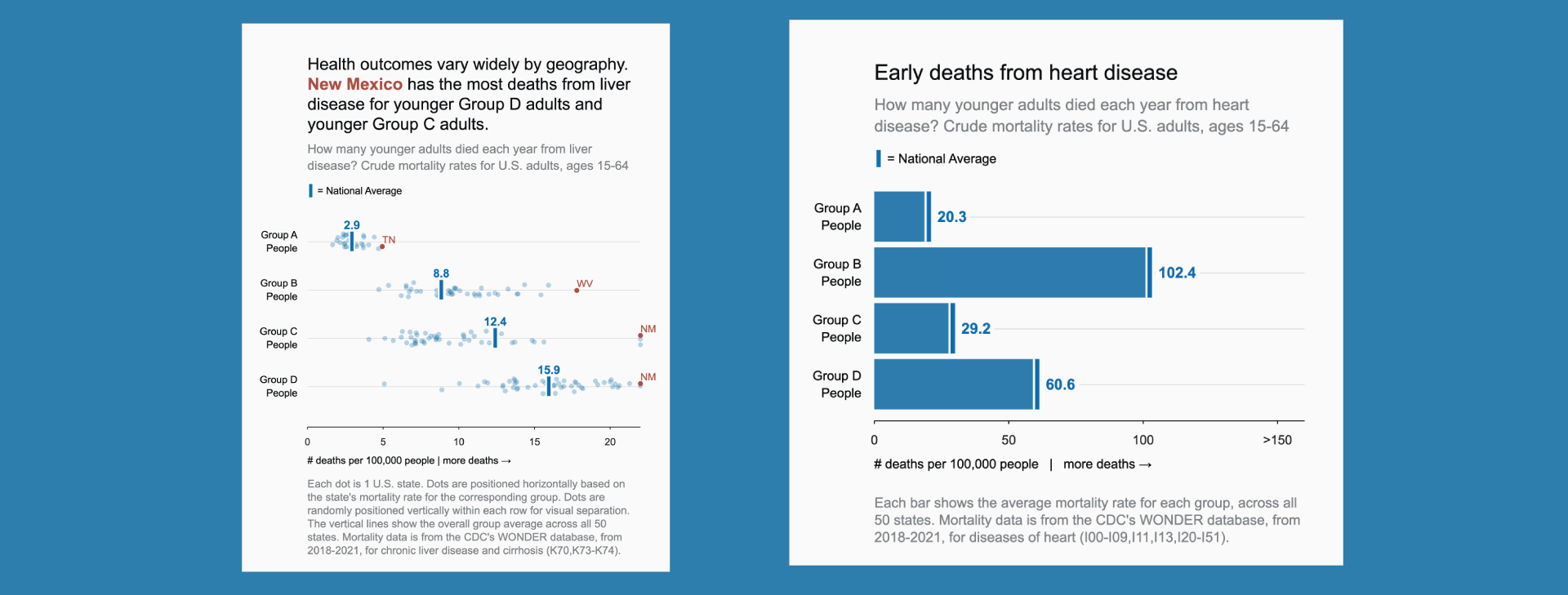“Must Be a Tuesday”: Affect, Attribution, and Geographic Variability in Equity-Oriented Visualizations of Population Health Disparities

Abstract
This study examines the impacts of public health communications visualizing risk disparities between racial and other social groups. It compares the effects of traditional bar charts to an alternative design emphasizing geographic variability with differing annotations and jitter plots. Whereas both visualization designs increased perceived vulnerability, behavioral intent, and policy support, the geo-emphasized charts were significantly more effective in reducing personal attribution biases. The findings also reveal emotionally taxing experiences for chart viewers from marginalized communities. This work suggests a need for strategic reevaluation of visual communication tools in public health to enhance understanding and engagement without reinforcing stereotypes or emotional distress
Authors
Eli Holder
Citation
“Must Be a Tuesday”: Affect, Attribution, and Geographic Variability in Equity-Oriented Visualizations of Population Health Disparities
Eli Holder and Lace M. Padilla. IEEE Transactions on Visualization and Computer Graphics—VIS/TVCG. 2024.
PDF | Preprint | Supplement | BibTeX
Khoury Vis Lab — Northeastern University
* West Village H, Room 302, 440 Huntington Ave, Boston, MA 02115, USA
* 100 Fore Street, Portland, ME 04101, USA
* Carnegie Hall, 201, 5000 MacArthur Blvd, Oakland, CA 94613, USA

